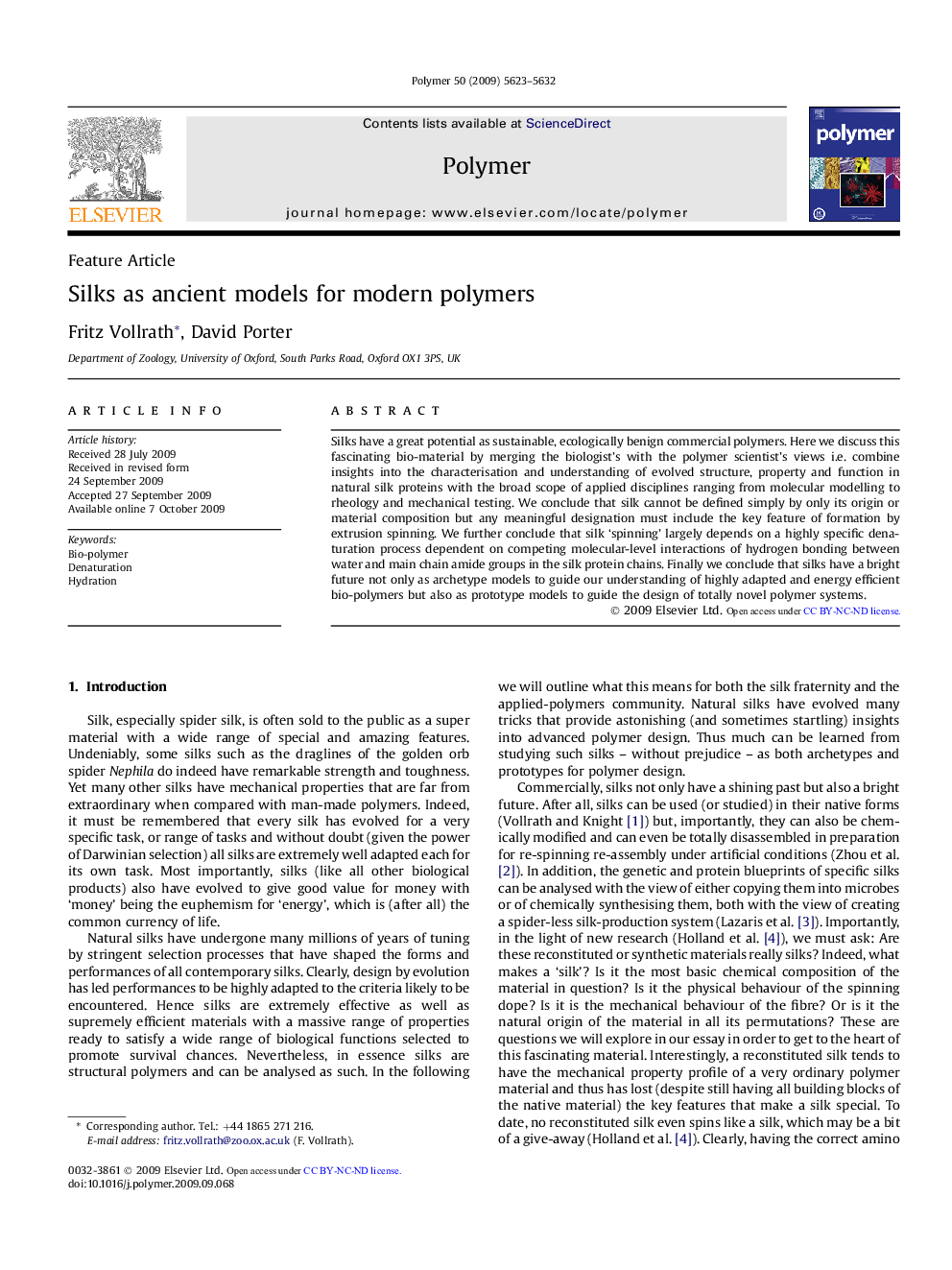| Article ID | Journal | Published Year | Pages | File Type |
|---|---|---|---|---|
| 5185650 | Polymer | 2009 | 10 Pages |
Silks have a great potential as sustainable, ecologically benign commercial polymers. Here we discuss this fascinating bio-material by merging the biologist's with the polymer scientist's views i.e. combine insights into the characterisation and understanding of evolved structure, property and function in natural silk proteins with the broad scope of applied disciplines ranging from molecular modelling to rheology and mechanical testing. We conclude that silk cannot be defined simply by only its origin or material composition but any meaningful designation must include the key feature of formation by extrusion spinning. We further conclude that silk 'spinning' largely depends on a highly specific denaturation process dependent on competing molecular-level interactions of hydrogen bonding between water and main chain amide groups in the silk protein chains. Finally we conclude that silks have a bright future not only as archetype models to guide our understanding of highly adapted and energy efficient bio-polymers but also as prototype models to guide the design of totally novel polymer systems.
Graphical abstractDownload full-size image
